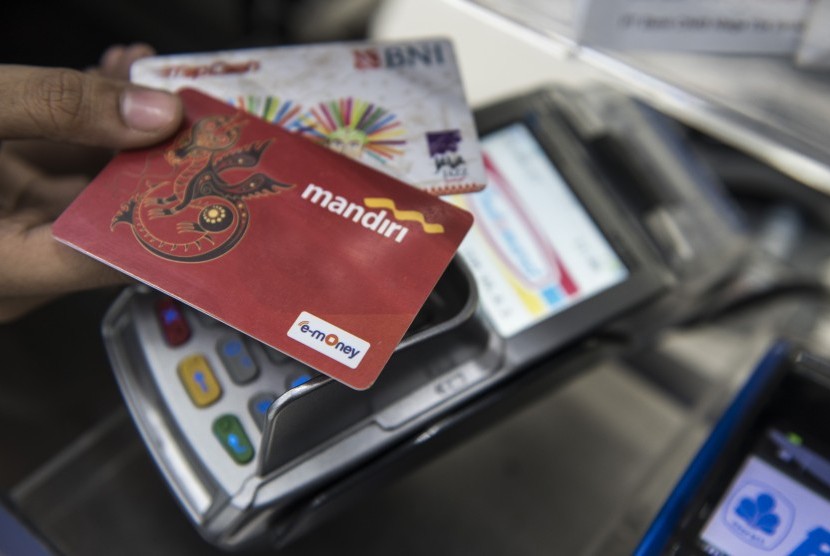REPUBLIKA.CO.ID, JAKARTA -- Bank Indonesia (BI) will set a maximum limit of chip-based electronic money top-up fee. In that provision, banks will have two options, whether to eliminate the charge or charge it with a certain limit (capping).
"Currently, the charge is vary, from free up to several thousand rupiah. Therefore, we will set the standard for top-up transactions on-us (card issuer bank) and off-us (partner or non-card issuer) ," Executive Director of BI Center of Transformation Program (PPTBI) Aribowo explained at his office on Tuesday.
According to Aribowo, the policy will allow the banks to provide free of charge on-us top-up service of electronic money for specific threshold. If the transaction is above the threshold, the bank may charge consumers with top-up fee that does not exceed the capping set by BI.
Meanwhile, for off-us transaction, consumers have to pay top-up fee as determined by BI.
"Currently, top-up fee at the mini markets and Transjakarta bus shelter are around Rp1,000 - Rp3,000. Transactions cost at multichannel ATM Rp6,500. We will lower the fee significantly," Aribowo said.
Also read: BI must review plan to impose electronic money top-up fee: Lawmaker
Head of PPTBI Onny Widjanarko said the amount of top-up fee will be determined by observing habits of electronic money users, especially toll road users and commuter.
"We are studying their average top-up rate. If the average is Rp100 thousand, will might free the fee," he said.
Onny explained the policy of charging top up of electronic money will be stipulated in the Members of the Board of Governor's Regulation (PADG). The PADG will be issued after the central bank issued a regulation to improve the Bank Indonesia Regulation (PBI) related to electronic money no later than the end of this year.
In addition, top-up fee also aimed at investment cost in the development of electronic money infrastructure.


